[In continuation from Photoblog of Trip to Allahabad-Sarnath-Varanasi ]
We left Varanasi by early morning Poorva Express and reached Gaya by 10.00 a.m. to be in time to perform the last and the most important sequence of the Shraddha ceremony. The ritual took almost remainder of the day. Next day, we shifted from the priest’s house to Ajatshatru Hotel, near Gaya railway station (Rs.600 to Rs.750/- per double bed room with geyser, TV, western toilet ) to have some flexibility in catching an early morning train to Patna. In the afternoon, we hired a Sumo (Rs.900/-) for a half-day trip to Bodh Gaya. Our day and timing of the visit were wrong as the main Mahabodhi temple was out of bound for tourists as some VIPs from abroad ( we were told that a prince from royal family of Thailand was having an exclusive pooja at the temple) and the earliest time the temple expected to be opened for tourists was around 8.00 p.m. So we had to be satisfied with viewing the Mahabodhi temple complex from outside the gate. Some of the other country’s Buddha temples were also out of bound for tourists due to 3-day ‘Offering of Robes to Venerable Maha Sangha’ ceremony. We could see Tibetan Karma temple, Namgyal Tibetan Monastery and Maha Bodh Vihara. Because of the Buddhist festival and Diwali holidays, Bodh Gaya was crowded with domestic tourists and pilgrims from south-east Asian countries and there was a festival like atmosphere all over the place. As a tourist, one would need a full day to see Mahabodhi and other country’s Buddha temples in Bodh Gaya.
Next day, we boarded an early morning Inter-city Express for Patna. Our visit to Patna was more for the convenience of catching a starting train back to Mumbai than with to do with sight-seeing interest. However, having reached the vicinity of some of the important tourist places around Patna, we had decided to spend a couple of days more in Patna to make a trip to Nalanda-Rajgir-Pawapuri. After reaching Patna, we checked in Hotel City Centre (AC double bed room @1600/-, 24 hours hot water, TV, excellent food in its restaurant), near Patna railway station. In the afternoon, we took a round of Patna City and spent some time in Golghar and Gandhi Maidan. Unfortunately, Patna museum was closed by the time we reached there and also we could not reach the other side of Ganga river due to massive traffic jam on the road bridge over Ganga.
Next day, we hired Bolero (Rs.11/- per km) and Indica (Rs.8/- per km) to visit Pawagiri-Rajgir-Nalanda. The vehicles booked through the travel desk of the Hotel a day before, did not turn up at the appointed time of 7.00 a.m. The travel desk had to arrange for other vehicles. With one hour lost in this process and a shorter daylight, we could do only Pawapuri and Rajgir as the counter for entry tickets to Nalanda ruins was closed by 5.00 p.m. It was most disappointing for all of us for not able to visit Nalanda ruins. On a hindsight, we felt that we should have travelled direct to Rajgir from Gaya for sight-seeing and after taking an overnight halt at Rajgir, we could have gone to Patna the next day evening after covering the remaining portion of tourist places.
The roads in Gaya, Patna and the tourist circuit of Pawapuri-Nalnda-Rajgir were far better as compared with that of Allahabad-Sarnath-Varanasi. Also, this time there was no fear psychosis in travelling and taking a walk in the night in Gaya and Patna as compared with what I had felt during my last visit to Gaya in 2000. In fact, an orderly in our Gaya hotel told me that in earlier time, he dared not venture out to reach his home after the end of his shift at 11.00 p.m. He would invariably stay back in the hotel and go to his house the next morning. Now he says that there is no such fear and he goes home every day after the end of his shift at 11.00 p.m.
Some of the pictures taken during our visit to Bodh Gaya-Patna-Pawapuri-Rajgir have been uploaded below with captions.
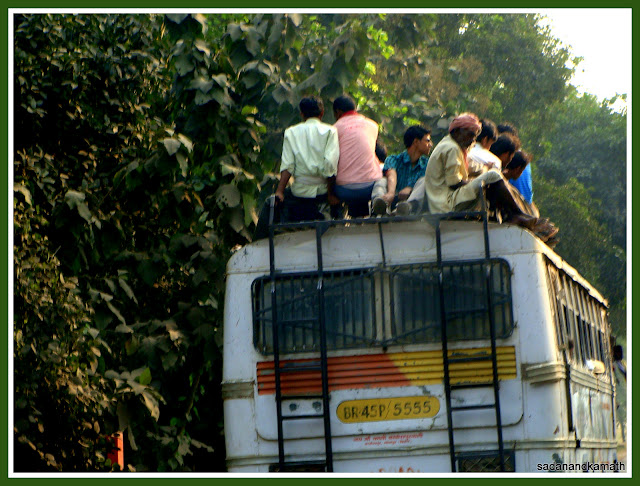 |
| Roof travellers on a bus going towards Bodh Gaya. |
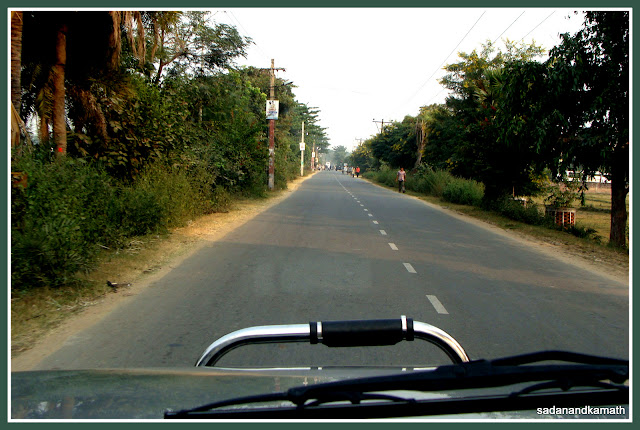 |
| The road to Bodh Gaya |
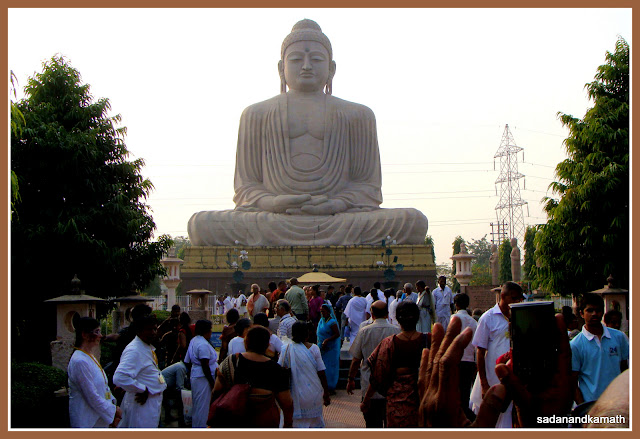 |
| Statue of Great Buddha, Bodh Gaya. It is the tallest Buddha statue in India having a height of 80 feet. Being the Hindu month of Kartik, there were more tourists and pilgrims including those from Sri Lanka and the far east countries. |
 |
| Face of the statue of Great Budha in Dhyan Mudra. |
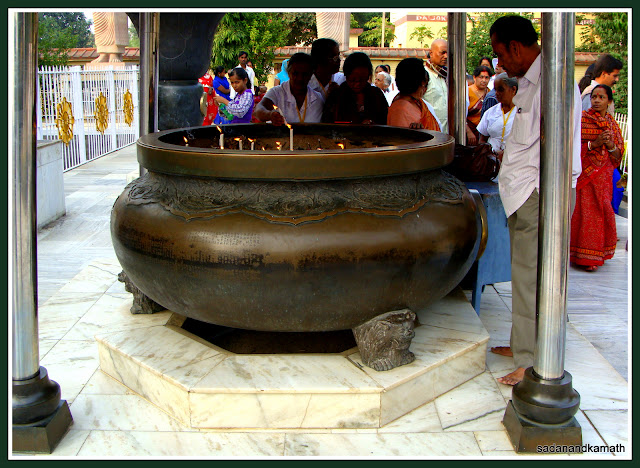 |
| A giant brass vassel for lighting candles below the statue of Great Buddha. |
 |
| Statues of 10 Great Disciples of Buddha stand around the Great Statue of Buddha, four of which can be seen here. |
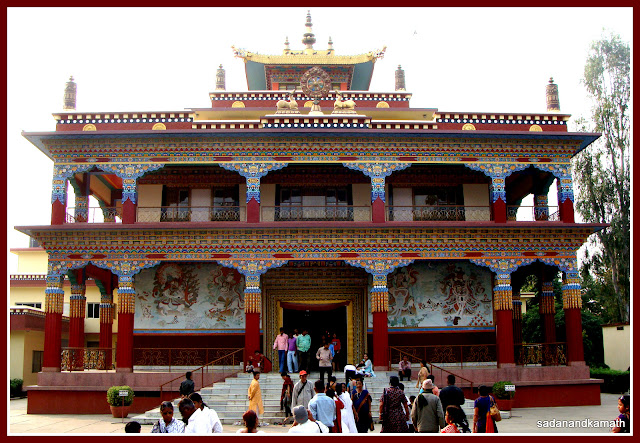 |
| Karma Tibetan temple, Bodh Gaya. |
 |
| The top of the Tibetan Karma temple |
 |
| A chorten inside the Tibetan Karma temple |
 |
| Paintings and frescoes on the pillars and ceilings of Tibetan Karma temple. |
 |
| Frescoes on the walls of the Tibetan Karma temple. In the top middle, is a mural of the Guardian. |
 |
| Fresco on a wall of Tibetan Karma temple. |
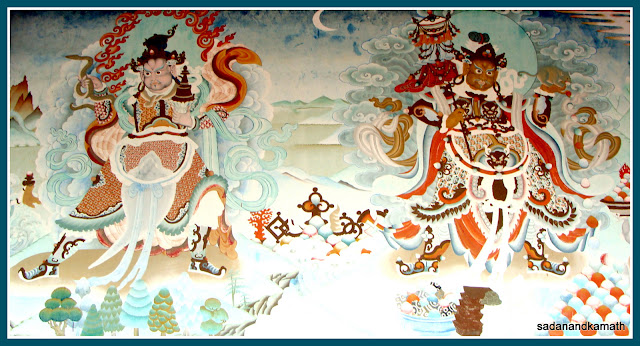 |
| Fresco on the wall of Tibetan Karma temple |
 |
| There was a festive mood at the entrance of the Mahabodhi temple on the occasion of Katina Chivara Pooja ( Offering of Robes to Venerable Maha Sangha). Mahabodhi Temple was out of bound for tourists for the day as a special pooja was being performed by visiting VIPs from Thailand. |
 |
| Mahabodhi Temple, Bodh Gaya seen from outside the gate. |
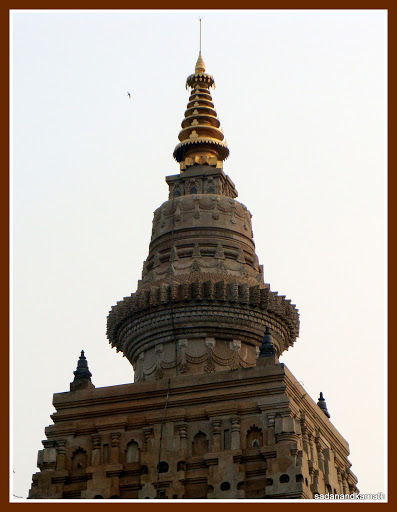 |
| Tower of Mahabodhi Temple. |
 |
| Small stupas adorn the roof of the Mahabodhi temple. |
 |
| Two Thai bhikshus going towards Mahabodhi temple for offering of robes. |
 |
| Statue of Maitreya Buddha. in Tibetan Namgyal Monastery. |
 |
| Frescoes on the walls of Namgyal Monastery. |
 |
| Frescoes on the walls of Namgyal Monastery. |
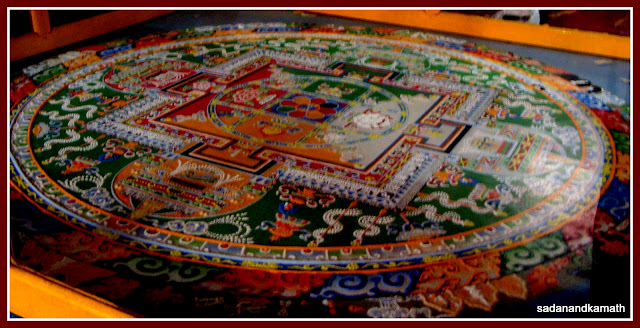 |
| Rangoli of Kalachakra (Wheels of time) inside Namgyal Monastery. |
 |
| Kalachakra (Wheels of Time) painting on one of the walls of Namgyal Monastery. |
 |
| Monks inside Tibetan Namgyal Monasteries, Bodh Gaya. |
 |
| Buddha statue inside Mahabodhi Vihara |
 |
| Frescoe depicting the Mahaprinirvana of Buddha on one of the walls of Mahabodhi Vihara. |
 |
| Gateway to Mahabodhi Vihara (Rest House for pilgrims) decorated with flowers on the occasion of Offering of Robes ceremony. |
 |
| Colourful lanterns were seen at many places in Bodh Gaya on the occasion of the Katina Chivra Pooja ( Offering of robes to Venerable Maha Sangha) |
 |
| Harmandir Sahib, Patna which is one of the four holiest Sikh shrines. This marble structure was built by Maharaja Ranjit Singh. |
 |
| Golghar, the landmark of Patna. The silo was built by Britishers in 1786 to store grain during famines that used to occur regularly in those days. |
 |
| View from Golghar. |
 |
| View of Ganga river side from Golghar. |
 |
| One of the two spiral stair cases of Golghar. |
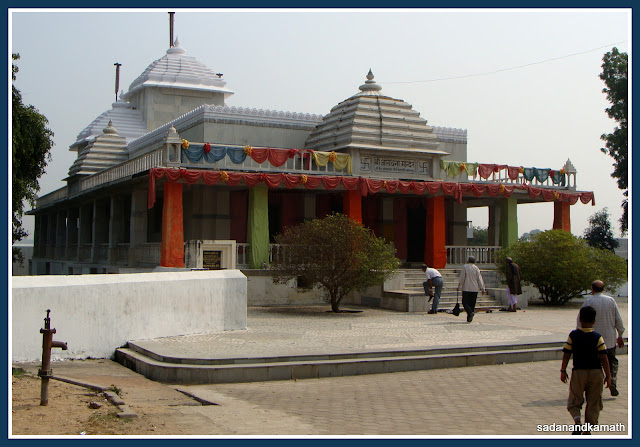 |
| Aradhana Jain Mandir, Pawapuri. |
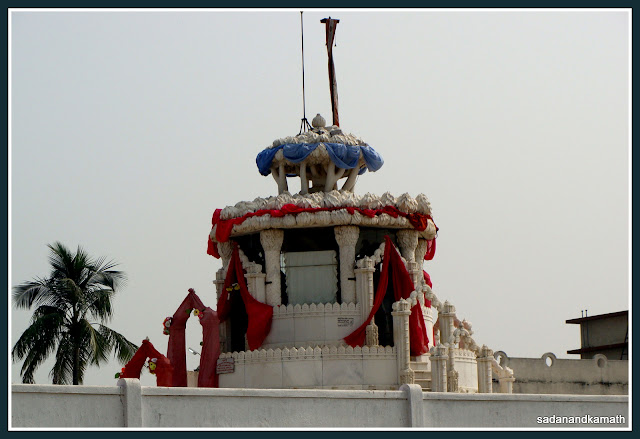 |
| The white marble Samashoran Jain Temple. Here Lord Mahavira delivered his last sermon. Entry to the top of this place is permitted only with puja robes. |
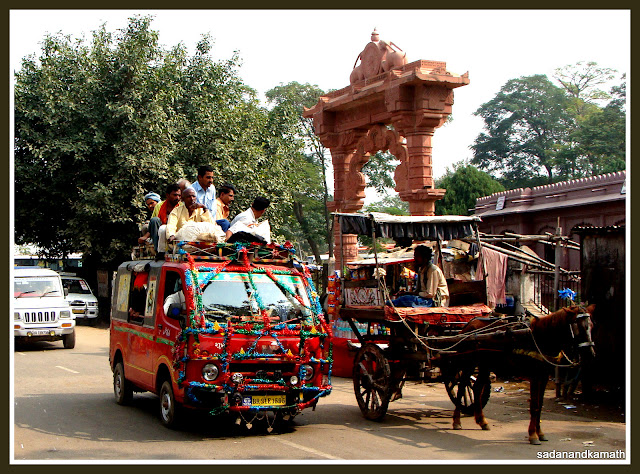 |
| Roof travellers on a Mini Van going towards Nalanda. |
 |
| A horse cart overloaded with passengers outside Jalmandir entrance, Pawapuri. Horse carts are the main mode of transport and one can see hundred of these carts plying on Pawapuri-Nalanda-Rajgir road. |
 |
| A horse with 'micro braid' hair style seen near Jalmandir entrance, Pawapuri. |
 |
| Entrance to Jalmandir, Pawapuri. Jalmandir is a marble temple surrounded by a rectangular pond full of lotuses. This is the place where Lord Mahavira attained salvation. |
 |
| The marble arches of Jalmandir leading to the pond. |
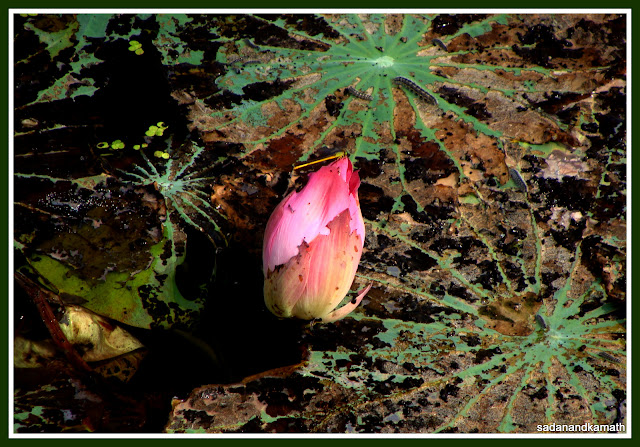 |
| A lotus bud in the pond of Jalmandir. |
 |
| Lutus in Jalmandir pond. |
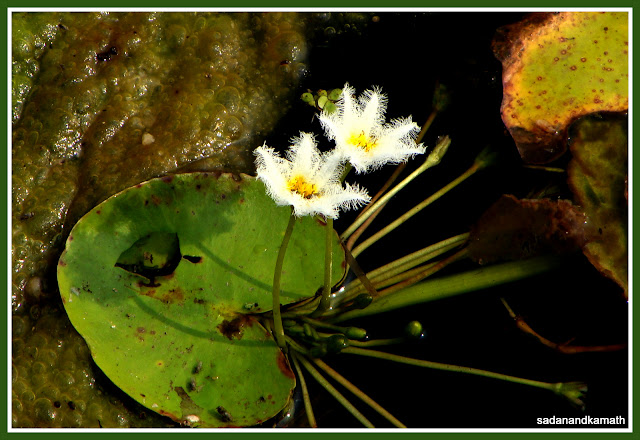 |
| Unidentified flowers in Jalmandir pond. |
 |
| Jalmandir pond is also full of fishes. Here a couple of fishes make merry of corn thrown by one of the visitors. |
 |
| The pond of Jalmandir. |
 |
| The connecting bridge to Jalmandir. |
 |
| The backside view of Jalmandir. |
 |
| A long queue for rope way to Vishwa Shanti Stupa, Rajgir. |
 |
| The chairlift rope way to Vishwa Shanti Stupa, Rajgir. |
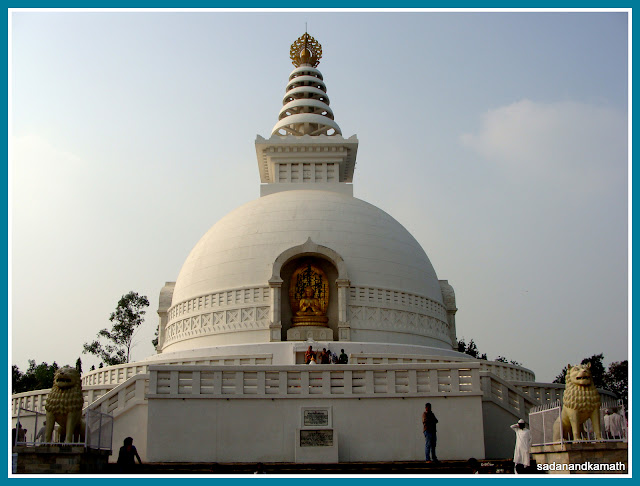 |
| Vishwa Shanti Stupa seen from the complex. |
 |
| The Stupa have four Golden coloured Buddha idols on its four side. This idol is one of them. |
 |
| The second Buddha idol. |
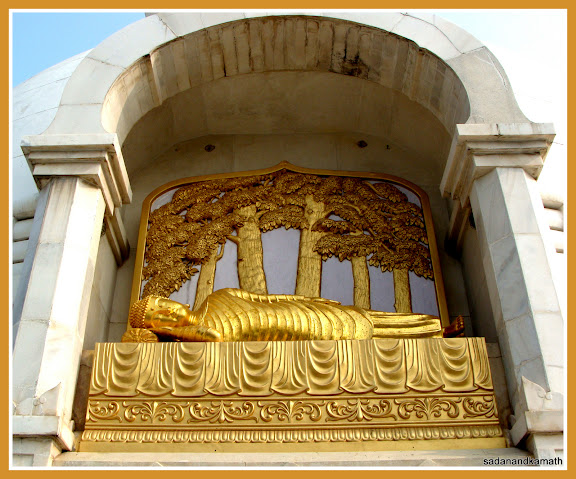 |
| The third reclining Buddha idol |
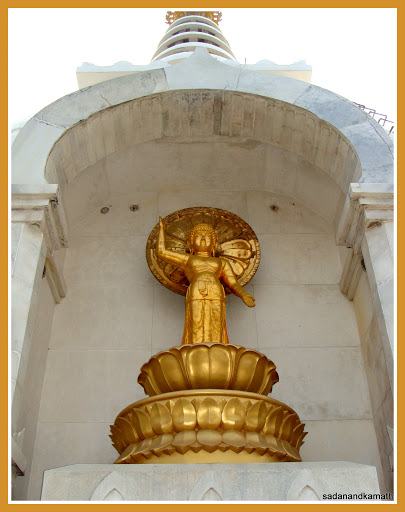 |
| The fourth standing Buddha idol. |
 |
| There are lots of langoors in the Vishwa Shanti Stupa complex but they did not bother tourists. |
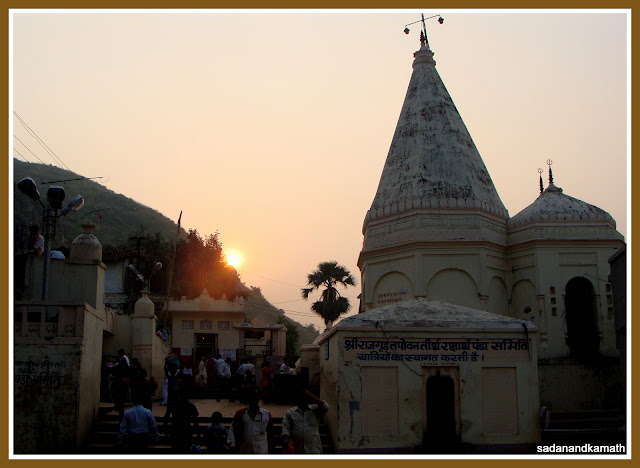 |
| Rajgir Kund temple |
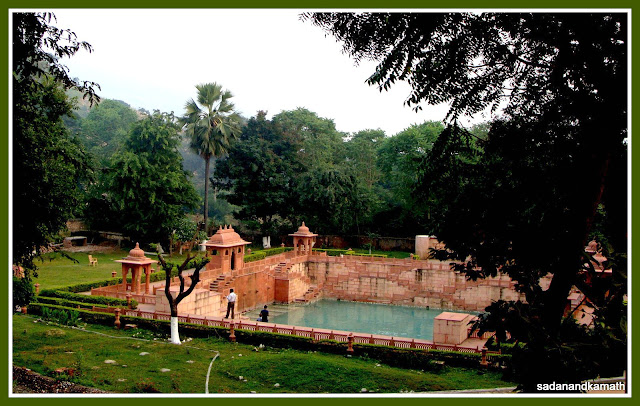 |
| Picnic spot with swimming pool adjunct to Rajgir Kund complex. The entry fee is Rs.25/- per head. |